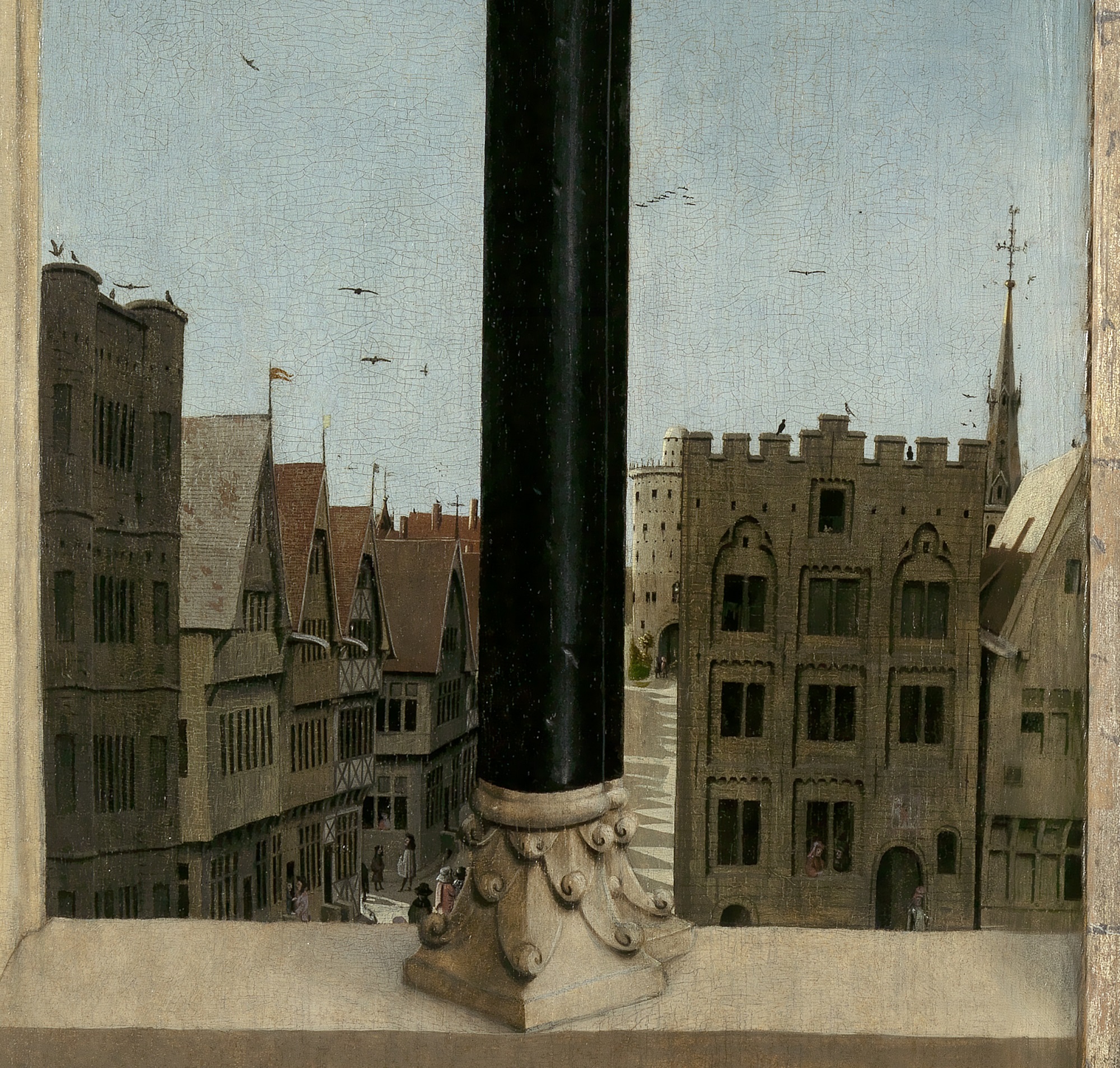Newly conserved and restored, the eight exterior panels of Jan Van Eyck’s Ghent Altarpiece, 1432, are the focus of an exhibition at the Museum of Fine Arts in Ghent, cut short by Covid-19, but now available to view via an online tour. Along with as yet untreated interior panels depicting Adam and Eve, the paintings are displayed at eye level, allowing unprecedented and truly remarkable views of works that transformed the art of painting in the Renaissance with their realism and revolutionary use of oil paint.
When later this year they resume their position high up in Van Eyck’s immense work, the paintings will never again leave St Bavo’s Cathedral, Ghent, where the altarpiece was once the centrepiece of a funerary chapel, commissioned by a wealthy merchant and his wife, Jodocus Vijd and Elizabeth Borluut (main picture). As our online guide, Van Eyck expert Till-Holger Borchert, puts it, this exhibition is “unrepeatable”, but his short tour is sensibly selective, focusing on a few well chosen highlights “to provide a sense of what the exhibition is about”, in full knowledge that more detail is available elsewhere on the website.
 The film benefits from being hastily done: there’s nothing overscripted about Borchert’s well-paced commentary, delivered direct to camera with the relaxed style of a private tour. He begins with Adam and Eve, whose original sin necessitated Christ’s birth and sacrifice and brought the promise of salvation, all of which is so comprehensively depicted in the 20 panels of Van Eyck’s altarpiece, which has been celebrated and coveted ever since it was completed. When Dürer saw it towards the end of his life he said it was “a stupendous painting, full of intelligence"; for the art historian Ernst Gombrich, writing in 1950, it represented “the final conquest of reality in the North”. Today, David Hockney returns to it time and again, mining its secrets with the help of a pair of binoculars.
The film benefits from being hastily done: there’s nothing overscripted about Borchert’s well-paced commentary, delivered direct to camera with the relaxed style of a private tour. He begins with Adam and Eve, whose original sin necessitated Christ’s birth and sacrifice and brought the promise of salvation, all of which is so comprehensively depicted in the 20 panels of Van Eyck’s altarpiece, which has been celebrated and coveted ever since it was completed. When Dürer saw it towards the end of his life he said it was “a stupendous painting, full of intelligence"; for the art historian Ernst Gombrich, writing in 1950, it represented “the final conquest of reality in the North”. Today, David Hockney returns to it time and again, mining its secrets with the help of a pair of binoculars.
For now, we can see it at unnervingly close quarters, and the microscopic detail of the two nudes is shocking even to 21st century eyes. We are not used to seeing wiry pubic hair, so boldly contrasted with the soft hairs of Eve’s head. Even for someone as familiar with the paintings as Borchert, the opportunity to look at close quarters has brought fresh insights, and he draws our attention to the fruit in Eve’s hand – conspicuously not an apple, and more like a lemon. Whatever it is, he says, “It just looks pretty evil.”
The altarpiece is as eloquent on the mysteries of painting as on the mysteries of the Christian faith. In a panel forming part of the Annunciation the fictive stone frame becomes a window to a world beyond our own, leading our eye to another window, through which we can see a bustling Ghent street scene (pictured above right). It is so tiny that it could never have been intended to be seen: perhaps for Van Eyck, it was enough just to know it was there.
- Watch the film
- Jan Van Eyck: An Optical Revolution at the Museum of Fine Arts, Ghent
- More visual arts reviews on theartsdesk










![SEX MONEY RACE RELIGION [2016] by Gilbert and George. Installation shot of Gilbert & George 21ST CENTURY PICTURES Hayward Gallery](/sites/default/files/styles/thumbnail_125_x_125_/public/mastimages/Gilbert%20%26%20George_%2021ST%20CENTURY%20PICTURES.%20SEX%20MONEY%20RACE%20RELIGION%20%5B2016%5D.%20Photo_%20Mark%20Blower.%20Courtesy%20of%20the%20Gilbert%20%26%20George%20and%20the%20Hayward%20Gallery._0.jpg?itok=3oW-Y84i)




Add comment